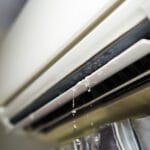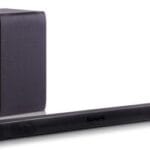Yes, you can plug your furnace into a generator, but it must have the appropriate capacity. Ensure the generator can handle the furnace’s power requirements.
In the midst of winter’s chill or during a storm, staying warm and safe becomes a top priority for many households. Power outages, unfortunately, are a common hurdle during such times, leaving many to wonder about alternative power sources for their heating systems.
Using a generator to power a furnace can be a practical solution, provided the generator’s output matches the furnace’s energy needs. This approach not only keeps your home warm but also adds a layer of safety and comfort during unexpected power interruptions. It’s essential to understand the specifics, such as the furnace’s wattage and the generator’s capacity, to ensure a smooth and safe operation.

Credit: m.youtube.com
Introduction To Powering A Furnace With A Generator
When winter storms hit, power outages can leave homes cold and uncomfortable. Ensuring warmth during these times is crucial. One solution is to power your furnace with a generator. This method can keep your home heated during an outage. Let’s explore the benefits and safety measures involved in this approach.
Why Consider A Generator For Your Furnace
- Continuous warmth: A generator can keep your furnace running without interruption.
- Peace of mind: You know your home stays warm during power outages.
- Prevents pipe freezing: Keeping the heat on helps prevent costly damages.
Safety First: Understanding The Basics
Before connecting a generator to your furnace, understand the basics. Safety is key. Generators must be the right size and properly installed. Consider these points:
| Point | Details |
|---|---|
| Right size | The generator must match the furnace’s power needs. |
| Proper installation | Have a professional install the system safely. |
| Ventilation | Generators need good airflow to prevent carbon monoxide buildup. |

Credit: www.reddit.com
Types Of Furnaces And Their Power Requirements
Understanding your furnace’s power needs is vital. Especially during power outages. Different furnaces have different power requirements. Let’s explore these types.
Electric Furnaces: High Power Needs
Electric furnaces need lots of power. They convert electricity into heat. This process uses up to 20,000 watts. A large generator is necessary. Below is a breakdown of power needs:
| Furnace Size | Power Usage |
|---|---|
| Small | 10,000 – 15,000 watts |
| Medium | 15,000 – 20,000 watts |
| Large | 20,000+ watts |
Gas And Oil Furnaces: Electrical Components
Gas and oil furnaces use less electricity. They rely on fuel. But they have electrical components. Think fans and ignition systems. These require power. Typically, 300 to 600 watts suffice. Here is what they need:
- Ignition: 200 watts
- Fan/Blower: 100 – 400 watts
- Controls: minimal
Ensure generator capacity matches your furnace’s power needs. A stable power source is crucial. It keeps your home warm and safe.
Selecting The Right Generator For Your Furnace
Winter storms often bring power outages. A reliable generator can keep your furnace running. This guide helps you choose the best one for your home.
Calculating Wattage Requirements
Know your furnace’s wattage needs before buying a generator. This ensures enough power during an outage. Start by checking your furnace’s manual. Look for the starting and running wattage. Add extra watts for other essentials. This total is your minimum generator power requirement.
- Starting wattage is higher than running wattage.
- Include a buffer for additional appliances.
Add more rows as needed
| Appliance | Starting Wattage | Running Wattage |
|---|---|---|
| Furnace | xxxx W | xxxx W |
| Refrigerator | xxxx W | xxxx W |
Portable Vs. Standby Generators
Choose between portable and standby generators. Portable ones are cost-effective. They can power a furnace and a few other items. Standby generators are more expensive. They start automatically and can power an entire home.
- Portable generators are less expensive.
- Standby generators offer convenience and power.
Consider your home’s size and power needs. Also, think about the installation space. This will guide your choice.

Credit: www.doityourself.com
Connecting Your Furnace To A Generator
Power outages can leave homes cold, especially in winter. Connecting your furnace to a generator keeps your home warm. This guide shows how.
Step-by-step Connection Process
- Turn off your home’s main power supply.
- Find your furnace’s power cord. It looks like a big plug.
- Get a heavy-duty extension cord. Make sure it’s long enough.
- Plug one end of the extension cord into the generator.
- Plug the other end into your furnace.
- Start the generator. Make sure it’s outside your house.
- Check if the furnace starts. Feel the warm air coming out.
Using Transfer Switches
A transfer switch makes connecting safer. It’s like a smart switch.
- It stops power from mixing. This keeps your house safe.
- It lets you power your furnace without long cords.
- A professional should install it. They know how to do it right.
Follow these steps for a warm house during power outages.
Safety Precautions When Using Generators
Using generators safely is key, especially with furnaces. Let’s dive into safety precautions when using generators. These steps keep you and your home safe.
Proper Ventilation To Prevent Co Poisoning
Generators produce carbon monoxide (CO), a dangerous gas. You can’t see or smell it. Proper ventilation prevents CO poisoning. Always use generators outside, far from windows, doors, and vents. This keeps the air in your home safe.
Keeping The Generator Dry And Grounded
Generators must stay dry and grounded. This prevents electric shocks. Use generators on a dry surface under an open, canopy-like structure. Never touch the generator with wet hands. Grounding the generator is also crucial. Follow the manufacturer’s instructions to properly ground. This protects you from electric hazards.
- Never use generators indoors or in garages.
- Install CO detectors in your home for extra safety.
- Check the generator’s manual for grounding instructions.
By following these steps, you ensure safe use of generators with furnaces. Safety first always protects your home and loved ones.
Maintenance Tips For Generators And Furnaces
Maintenance Tips for Generators and Furnaces are vital for safety and efficiency. Proper care ensures reliable power and heat during outages. Follow these guidelines for peak performance.
Regular Generator Maintenance
Generators need consistent attention for best results. Here’s a simple maintenance checklist:
- Check oil levels – Change oil according to manufacturer instructions.
- Inspect filters – Replace air and fuel filters regularly.
- Test battery – Ensure it’s fully charged and clean terminals.
- Run routinely – Operate monthly to prevent engine issues.
Furnace Check-up For Optimal Performance
A well-maintained furnace keeps you warm and saves money. Follow these steps:
- Replace filters – Do this every 1-3 months for clean airflow.
- Inspect blower belt – Look for wear and adjust tension as needed.
- Clean vents – Remove dust to improve heating efficiency.
- Professional inspection – Schedule annual checks with a certified technician.
Alternatives To Using A Generator
When power outages strike, keeping your furnace running is crucial. Many turn to generators, but alternatives exist. These options provide safety and efficiency. Let’s explore some of the best.
Battery Backup Systems
Battery backup systems ensure continuous power. They are safe and quiet. Unlike generators, they don’t emit fumes. Here’s how they stand out:
- Instant Power: They switch on immediately after an outage.
- Low Maintenance: No fuel refilling needed.
- Long Lifespan: Durable batteries last for years.
Battery backups come in different sizes. Choose one that fits your home’s needs.
Renewable Energy Solutions
Solar panels and wind turbines offer clean energy. They can power your furnace and more. Here’s why they’re beneficial:
- Eco-Friendly: Reduce your carbon footprint.
- Cost-Effective: Sun and wind are free energy sources.
- Energy Independence: Break free from utility companies.
Combine these with battery storage for an unbeatable setup. You’ll have power day and night.
Real-life Scenarios And Solutions
Winter storms can knock out power. Your furnace stops. The house gets cold. What do you do? Many people ask, “Can I plug my furnace into a generator?” The answer is yes, but you need the right setup. Let’s explore real-life scenarios where a generator can keep your furnace running and your home warm.
Handling Power Outages
Short-term outages are common. A portable generator can power your furnace. It’s important to:
- Check your furnace’s power requirements.
- Pick a generator with enough wattage.
- Use heavy-duty extension cords.
- Never run a generator indoors. Carbon monoxide can kill.
Always read your furnace and generator manuals first. Safety comes first.
Long-term Power Loss Strategies
Extended outages need long-term plans. Standby generators are best. They:
- Start automatically when power goes out.
- Run on natural gas or propane.
- Can power your whole house.
Installation by professionals is a must. They ensure everything works right.
A dual-fuel furnace is another option. It uses electricity and a second fuel. This means:
| Fuel Type | Benefits |
|---|---|
| Gas | Reliable and widely available. |
| Oil | Good for remote areas. |
| Propane | Stores well, good for emergencies. |
Remember to stock up on extra fuel. Stay ready for long outages.
Frequently Asked Questions
Can Generators Power Home Furnaces?
Yes, generators can power home furnaces if they meet the wattage requirements of the furnace and are properly connected using a transfer switch or interlock device.
What Size Generator For My Furnace?
To determine the size of the generator for your furnace, calculate the starting and running wattage of the furnace and add a margin for additional appliances.
Is Using A Generator For Furnace Safe?
Using a generator for a furnace is safe when you follow the manufacturer’s guidelines, use a carbon monoxide detector, and ensure proper ventilation.
How To Connect Furnace To Portable Generator?
To connect a furnace to a portable generator, use a transfer switch or interlock kit installed by a licensed electrician to ensure a safe and code-compliant connection.
Generator Running Time For Furnace?
The running time of a generator for a furnace depends on the generator’s fuel capacity and consumption rate, which varies by model and the furnace’s power usage.
Conclusion
Wrapping up, powering your furnace with a generator is possible with the right safety measures and specifications. Always prioritize professional advice and adhere to manufacturer guidelines to ensure a warm, hazard-free home. Stay prepared and keep your comfort uninterrupted, even during a power outage.




